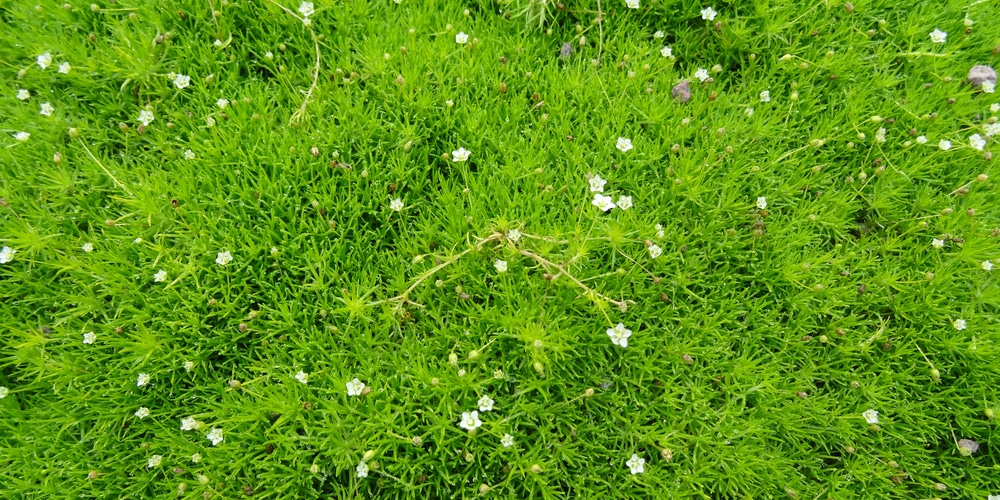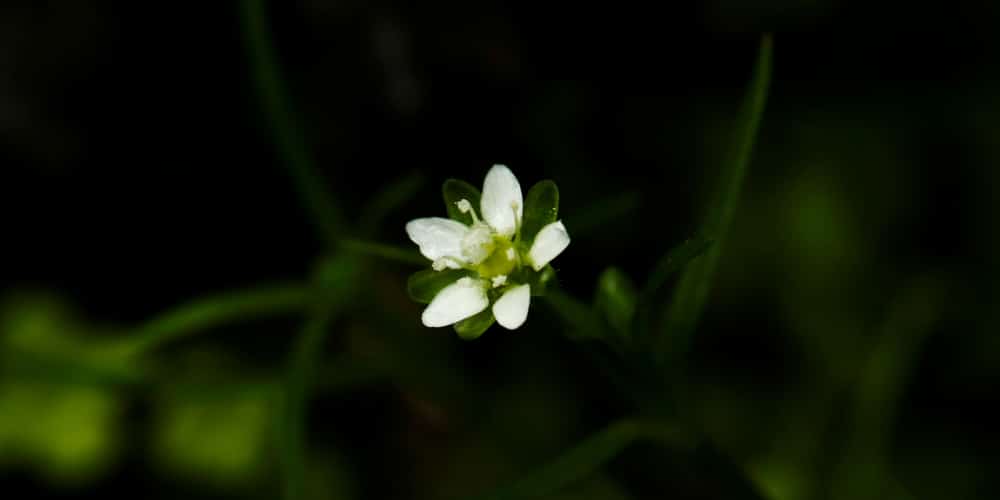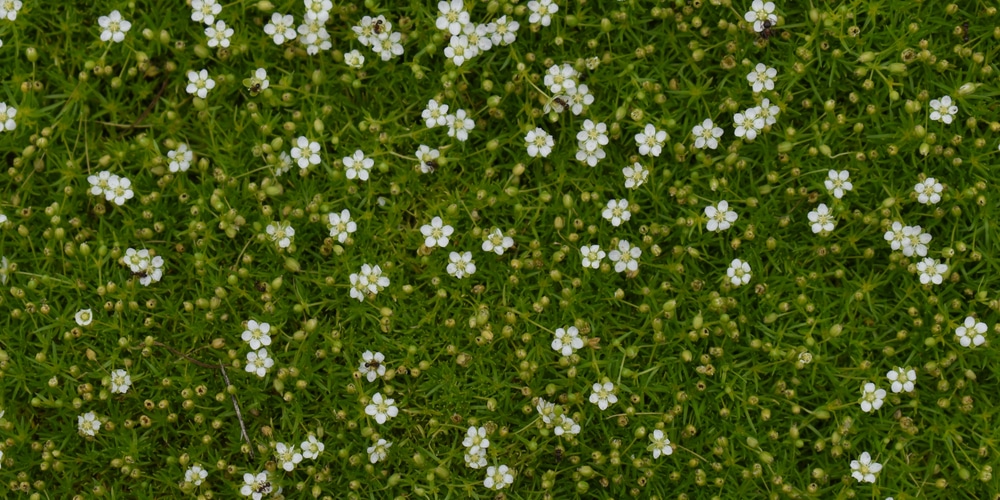Flowering plants are a vital part of any garden. Not only do they look pretty and stunning when in full bloom, but they also attract bees and other pollinators. However, there comes a time in every gardener’s life when they have to deal with an invasive plant.
Not all weeds look like weeds. Some, such as pearlwort (Sagina procumbens), are actually quite pretty. But don’t let its delicate white flowers and smooth leaves fool you. This plant is an invasive species that can quickly take over your garden if left unchecked.
What is Pearlwort?

You’ve probably seen pearlwort before, and not even realized it. It’s a small, low-growing plant usually characterized by its small flowers and narrow leaves. Although it has flowers, it’s been categorized as weeds more often than not.
Unfortunately, it’s a perennial plant – which means that getting rid of it once it’s in your garden will be a bit more complicated than getting rid of other annual weeds.
You’ll often see pearlwort in areas where the soil is mostly wet or moist, such as along the edges of ponds or in damp meadows. It’s a native plant to Europe, Asia, and North America – so it can pretty much grow anywhere.
From afar, these plants may look like moss or other ground-covering plants. But up close, you’ll see that they have small white or pink flowers.
Why is Pearlwort So Invasive?
Pearlwort gets its name from the small, round pearls that form on the plant’s leaves. These pearls are actually tiny, water-filled sacs that help the plant retain moisture.
The problem with pearlwort is that it’s a very fast-growing plant. Once it takes root in your garden, it can quickly spread and cover large areas – crowding out other plants in the process.
Its narrow and thin leaves are also embraced by a thick cuticle membrane. While this might not sound like a big deal, it makes the plant quite resistant to herbicides and other weed killers. In short, pearlwort is an extremely hardy plant that is difficult to get rid of – which is why it’s considered an invasive species.
Aside from its leaves being resistant to almost all kinds of herbicides, the plant also produces a lot of seeds. One mature plant can have up to 50,000 seeds in a single season!
These seeds would rapidly spread with foot traffic, mowing, or even animals brushing up against the plant. Once the seeds have been dispersed, they can lay dormant in the soil for years – waiting for the right conditions to germinate.
Not only are they difficult to get rid of, but their quick reproduction process makes pearlwort one of the most invasive plants in North America.
How to Get Rid of Pearlwort
If they’re filled with pretty white flowers, why would you want to get rid of them?
Aside from the fact that they’re incredibly difficult to control, pearlwort can also crowd out other plants in your garden. They’d compete with your other plants for water and nutrients – stunting their growth in the process.
Additionally, pearlwort can also act as a host for various diseases and pests. These diseases and pests would then spread to your other plants, causing even more damage.
The question is, considering that most herbicides don’t work on this plant, how do you get rid of it?
Cultural Control
Understanding a pearlwort’s growing conditions, they’re normally found in areas where the lawn is too shady or the soil is too wet.
One of the best ways to get rid of pearlwort is to improve the growing conditions in your garden. If you make your lawn less hospitable for them, they’ll have a harder time surviving. Increase the amount of sunlight your lawn gets or improve the drainage in your garden.
If you have a pond or water feature on your property, remove any pearlwort growing along the edge. Pearlwort can easily spread to other areas of your garden via waterways – so it’s important to nip it in the bud as soon as possible.
Hand-Pulling
While it’s still forming, you can pull pearlwort out of the ground by hand. Make sure to do this on a dry day, as wet soil would make it harder to remove the plant. Doing this once they’ve spread would be incredibly difficult, as you’d have to pull up all the individual plants – which would take forever. And in the process, you’re risking spreading its seeds even further.
Mulching
Pearlwort loves moisture – a lot! If you keep your garden well-watered, they’ll have a harder time surviving. One way to do this is by using mulch in your garden beds. This would help reduce the amount of water that evaporates from the soil – making it less hospitable for pearlwort.
There are various types of mulch you can use, but make sure to avoid using manure or compost. These organic materials would actually add nutrients to the soil – which would help pearlwort grow even more!
You can add compost once you’ve completely eliminated the plant, as this would help improve the quality of your soil.
Chemical Control
If you’re looking for a more immediate solution, there are some broadleaf herbicides and weed killers that would work on pearlwort. Rather than using typical weed killers, choose a systemic one that would be absorbed by the plant.
You can either apply the herbicide to the leaves or directly to the soil. If you’re applying it to the leaves, make sure to do so on a sunny day. This would help maximize its effectiveness, as the leaves would absorb more of the herbicide.
Be careful when using herbicides, as they can also damage other plants if you’re not careful. Ideally, you should only use herbicides as a last resort – when all other methods have failed.
Biological Control
One of the most effective ways to get rid of pearlwort is by using biological control. This involves introducing another organism that would feed on pearlwort – effectively killing it.
One of the most common predators used for biological control is the weevil Larinus minutus. These weevils would lay their eggs on pearlwort – and when the larvae hatch, they would start feeding on the plant. This would eventually kill pearlwort, as they wouldn’t have anything to feed on.
Final Thoughts
Hopefully, this gives you a better understanding of how to get rid of pearlwort. While it may be a difficult task, it’s definitely doable with the right method. Just remember to be patient, as getting rid of pearlwort takes time and effort.

